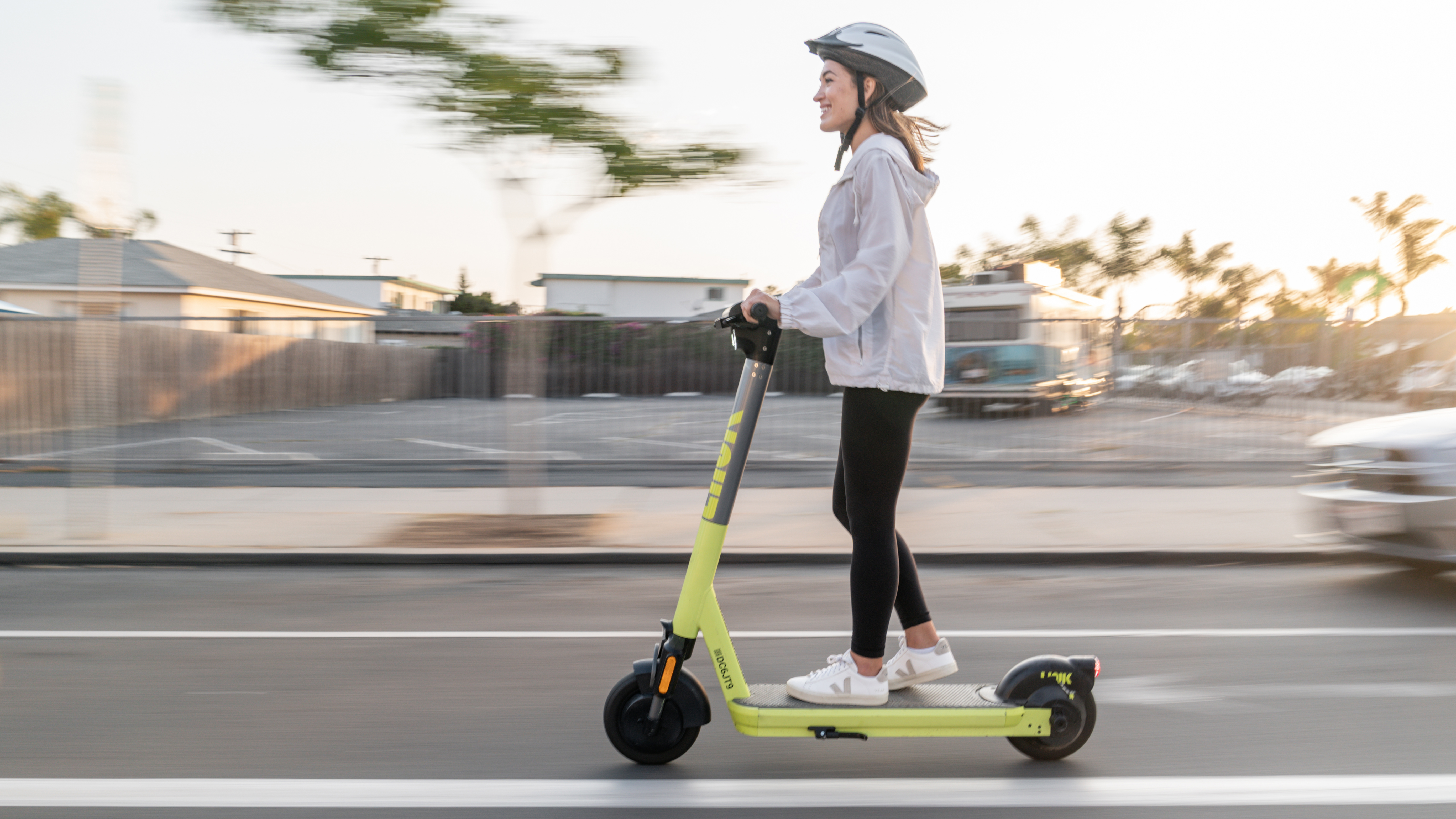The future of electric scooter safety according to Superpedestrian
Are e-scooters really a menace to society? Superpedestrian’s VP, Haya Verwoord Douidri, thinks it's cars that are the problem…


Superpedestrian, a brand known as the 'Volvo of e-scooters', recently unveiled a breakthrough active safety system called 'Pedestrian Defense'. The new system doesn’t just detect unsafe behaviours, such as riding on the pavement, but also puts a stop to them in real-time in order to prevent serious injuries.
For example, Pedestrian Defense aims to stop unsafe behaviours such as pavement riding, wrong-way riding, aggressive swerving and repeated hard braking, then immediately correct the behaviours by slowing or safely stopping the electric scooter.
- Best electric scooter: top e-scooters for adults
We've interviewed Haya Verwoord Douidri, Vice President at Superpedestrian (EMEA), to learn a little more about Pedestrian Defense and the company's plans for the future:
Could you see this technology rolled out to privately owned e-scooters?
Pedestrian Defense is made possible only by combining an array of highly accurate vehicle sensors, onboard microcomputers and powerful artificial intelligence. In order to be fast enough and accurate enough to stop sidewalk riding in its tracks, the vehicle must be able to perform “edge computing” - that is, making computations onboard the vehicle itself.
LINK is the only e-scooter available today (shared or private) with the technological capacity to run this system.
What safety features are you working on next?
Get all the latest news, reviews, deals and buying guides on gorgeous tech, home and active products from the T3 experts
Pedestrian Defense is a game-changer. It is the first technology that will stop sidewalk riding in real-time, rather than just detect it or beep at riders. It's also the only technology that can detect - and correct - many other unsafe behaviours, such as wrong-way riding and aggressive, erratic riding.
This is not our first active safety product, of course. Our patented VI (Vehicle Intelligence) system runs 1,000 vehicle health checks every second during rides and modulates performance to avoid component failure or premature wear. This is revolutionary, too, in ensuring riders always have a safe vehicle to ride.
VI also enabled us to be the first provider to store city maps, protected zones and geofence commands directly on the scooter itself, giving LINK the fastest and most consistent response to protect both riders and pedestrians.
Our R&D team is already working on the next generation of safety technologies.
Are there any technologies you’re looking at to improve the safety of the rider in the event of a collision with a vehicle? I’m thinking of airbags or automatic emergency braking, similar to modern cars.
Our priority is to prevent collisions from happening in the first place. We do this by designing a vehicle that is stable and secure to ride, and that is ergonomically suited to 97% of the entire population.
Pedestrian Defence is another building block in this safety wall. It will detect unsafe riding, such as travelling the wrong way along a one-way street, repeated heavy swerving or aggressive acceleration and braking. Thanks to our powerful AI, each scooter will be able to assess whether its rider is performing inside accepted parameters, and end the ride if not.
We have several other features that protect riders, such as a triple-braking system that features two mechanical brakes and an e-brake. This provides excellent stopping power (nearly half the distance of alternative models) and builds in redundancy. The e-brake activates automatically to control hill descents, to protect riders from a runaway scooter.
As with pedestrians and cyclists, the safest way to prevent collisions with cars is to remove cars from congested city streets in the first instance, which we do by providing an alternative for short trips. We support the core principles of Vision Zero, that all crashes are preventable, and engineering has the most power to prevent crashes.
Are you planning a purchasable version of a Link scooter, similar to what Bird has done?
At this time, we’re focused on being the best at what we do, which is building and operating the safest and most comfortable shared e-scooter on the market.
Superpedestrian was founded to create light electric vehicles that can replace unnecessary car journeys and create more space in our cities for pedestrians and cyclists.
Our first product was a consumer item designed for bicycles, so we’re no stranger to offering technology for purchase directly to the public. We believe shared vehicles are better for the environment as they reduce materials use and make more efficient use of public space. That’s why we’re focused on bringing our sharing service to as many people and communities as possible.
Electric scooters are getting a bad reputation at the moment for causing accidents. Do you think they’ll be able to survive the bad press they’re getting?
Don’t believe what you read in the papers. Five people die every day on British roads, and the vast majority of those are as a direct result of cars.
There are three considerations to integrating e-scooters into transport networks that we should tackle right now, however.
First, e-scooters are often flimsy, unsafe vehicles that are not up to the job of keeping people safe on the roads, unlike the robustly engineered LINK scooters. E-scooters are used on the roads and should be designed like vehicles, not like toys. This includes both private and shared e-scooters.
Second, riders are often uneducated about where it is legal to ride, something we particularly see with privately-owned e-scooters. Shared e-scooter providers invest thousands of hours and millions of dollars in showing e-scooter riders what courteous, considerate and safe riding looks like. For example, Pedestrian Defense allows us to create individual rider safety profiles based on their real-world behaviour, and deliver that tailored training directly to riders.
Third, it is well known that infrastructure design plays a key role in user behaviour. If riders (and this includes cyclists) feel unsafe on the road, they will seek alternative routes, which can include sidewalks. Designing cities that promote walking and cycling first will also result in spaces that can accommodate e-scooters safely.
Ultimately, we need to tackle the climate crisis and road safety by offering people alternatives to car travel. Residents in cities across the world clearly love e-scooters, and e-scooters present a powerful tool in achieving low-carbon, emissions-free transport.
What is your opinion on privately owned electric scooters? Do you think they should be allowed on public roads?
A city which begins to fight back against the dominance of dangerous, polluting motor vehicles is one that opens up spaces for people to choose alternative forms of transport. Often, this is a mix of walking, cycling and options such as e-scooters.
With cars removed from the mix, there is more than enough road space to safely accommodate all of these low-impact transport modes. Congestion would be a thing of the past, as would toxic air pollution from exhaust fumes and disintegrating tyres.
A world where roads are populated by walkers, cyclists and, yes, e-scooter riders is the world Superpedestrian is working towards.
Liked this?
- Electric scooter maintenance: the essential guide to keeping your e-scooter healthy
- Best cheap electric scooter deals

As the Style and Travel Editor at T3, Spencer covers everything from clothes to cars and watches to hotels. Everything that's cool, stylish, and interesting, basically. He's been a part of T3 for over seven years, and in that time covered every industry event known to man, from CES and MWC to the Geneva Motorshow and Baselworld. When he's driving up and down the country in search of the greatest driving roads, he can be found messing around on an electric scooter, playing with luxury watches, or testing the latest fragrances.